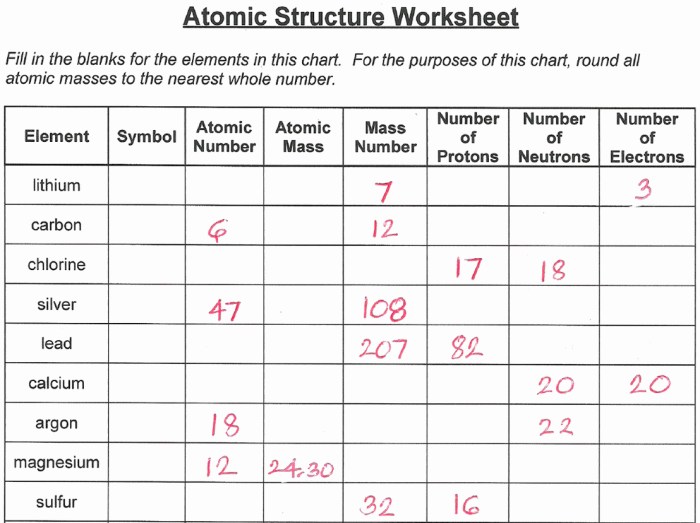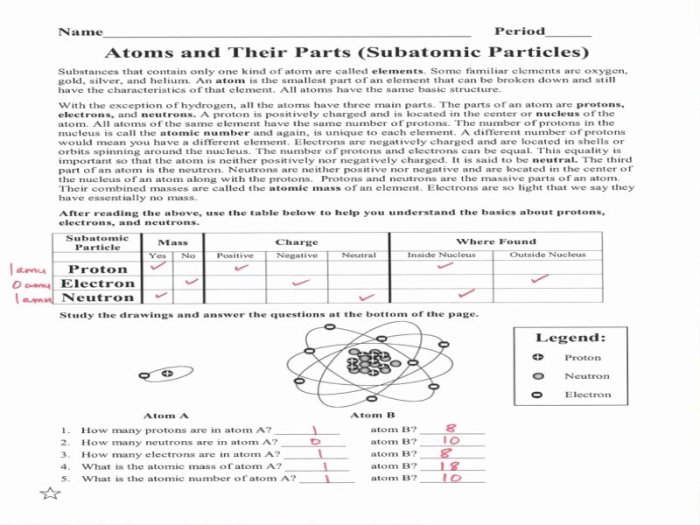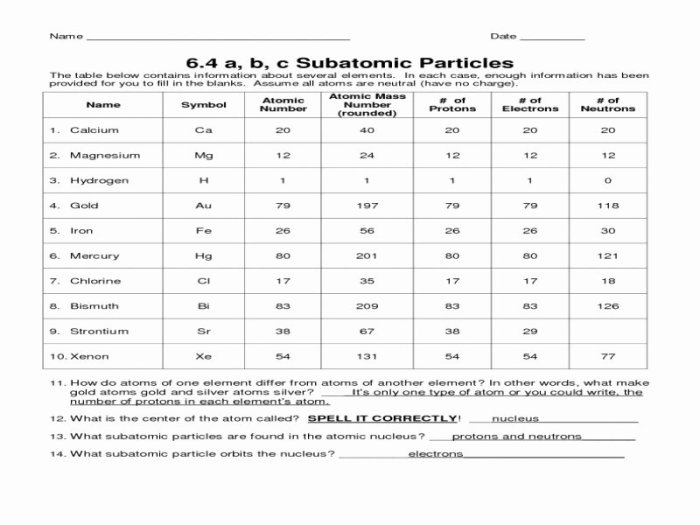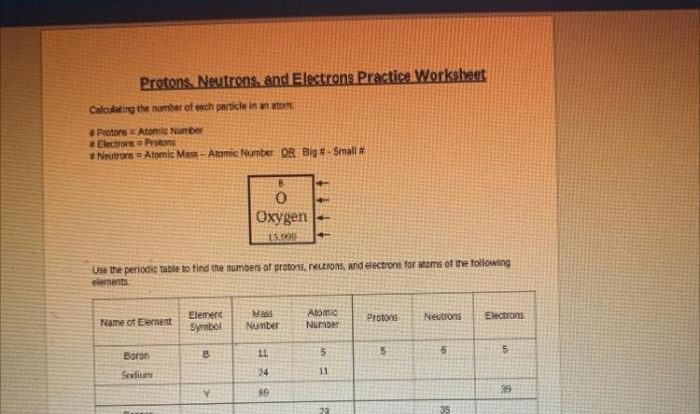The worksheet on subatomic particles answers provides a comprehensive overview of the fundamental building blocks of matter. This guide delves into the key concepts of subatomic particles, including their charge, mass, and properties, empowering students with a deep understanding of the microscopic world.
Through engaging examples and applications, this worksheet effectively conveys the significance of subatomic particle physics in various fields, from nuclear power to medical imaging. By exploring additional resources and suggested activities, students are encouraged to expand their knowledge beyond the confines of the worksheet, fostering a lifelong passion for scientific inquiry.
Subatomic Particles Overview: Worksheet On Subatomic Particles Answers

Matter is composed of tiny particles called subatomic particles. These particles are the fundamental building blocks of all matter in the universe. The three main types of subatomic particles are protons, neutrons, and electrons.
- Protonshave a positive charge and a mass of approximately 1 atomic mass unit (amu). They are found in the nucleus of an atom.
- Neutronshave no charge and a mass of approximately 1 amu. They are also found in the nucleus of an atom.
- Electronshave a negative charge and a mass of approximately 1/1836 amu. They orbit the nucleus of an atom.
Question Bank
What are the three main types of subatomic particles?
Protons, neutrons, and electrons
What is the charge of a proton?
+1
What is the mass of a neutron?
Approximately 1 atomic mass unit (amu)
What is the role of subatomic particles in nuclear power?
Subatomic particles are involved in nuclear reactions that release energy, which can be harnessed for electricity generation.
How are subatomic particles used in medical imaging?
Subatomic particles, such as positrons and gamma rays, are used in techniques like PET scans and radiation therapy.



